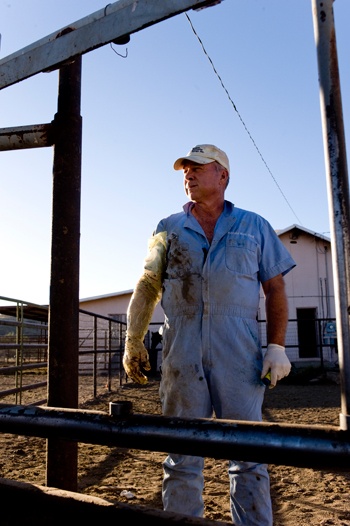Statistics help tell the story of a national shortage of rural veterinarians:
• Debt: According to the American Veterinary Medical Association (AVMA), veterinary college graduates nationwide left school in 2009 carrying an average of almost $130,000 in debt; 89 percent of all graduates that year left veterinary school with debt. In spring 2010, almost 37 percent of the 125-member graduating class at the Texas A&M College of Veterinary Medicine & Biomedical Sciences left school more than $100,000 in debt.
• Texas’ veterinarian distribution: According to the AVMA (see map), remote areas in the Panhandle, South Texas and West Texas show the most severe shortages of veterinarians. Statistics indicate that almost one-quarter of Texas’ counties, 62, have no food-animal veterinarians. And 63 Texas counties have just one veterinarian available to treat farm and ranch animals.
• Gender about-face: In 2010, in a statistic reflecting a national trend, women composed about three-quarters of Texas A&M’s graduating veterinarian class. Some studies indicate that female veterinarians, for many reasons, might not be as inclined to enter large-animal practice.
• Tuition: A report from the Texas Higher Education Coordinating Board states that Texas A&M University “has kept its tuition as affordable as possible, over $7,000 less than the average veterinary school tuition in the 10 most populous states.” Indeed, tuition for Texas A&M veterinary students has not increased over the past 10 years, although fees have increased dramatically during that same time frame. Generally speaking, it’s expensive to attend any veterinary college because schools must stay on the cutting-edge of technology and healthcare by providing the best possible faculty members and medical equipment.
Potential Help on the Way
• Texas A&M University request: Texas A&M is requesting $115 million in tuition revenue bonds from the Texas Legislature for a new classroom facility that would increase class sizes by more than 13 percent, potentially sending more veterinarians into rural areas. The request includes money for a small-animal teaching hospital expansion.
• Veterinary Medicine Loan Repayment Program: This federal program will pay up to $25,000 per year toward educational debt relief for eligible veterinarians who agree to serve in designated shortage areas for at least three years (Texas has eight designated areas). Two U.S. senators, from South Dakota and Idaho, have introduced legislation seeking tax-exempt status for the program. Currently, 39 percent of the funding is returned to the U.S. Treasury as a federal tax. Removing the tax, legislators say, would provide more money for rural veterinarians and allow for awarded funding to one additional veterinarian per every three now eligible.

